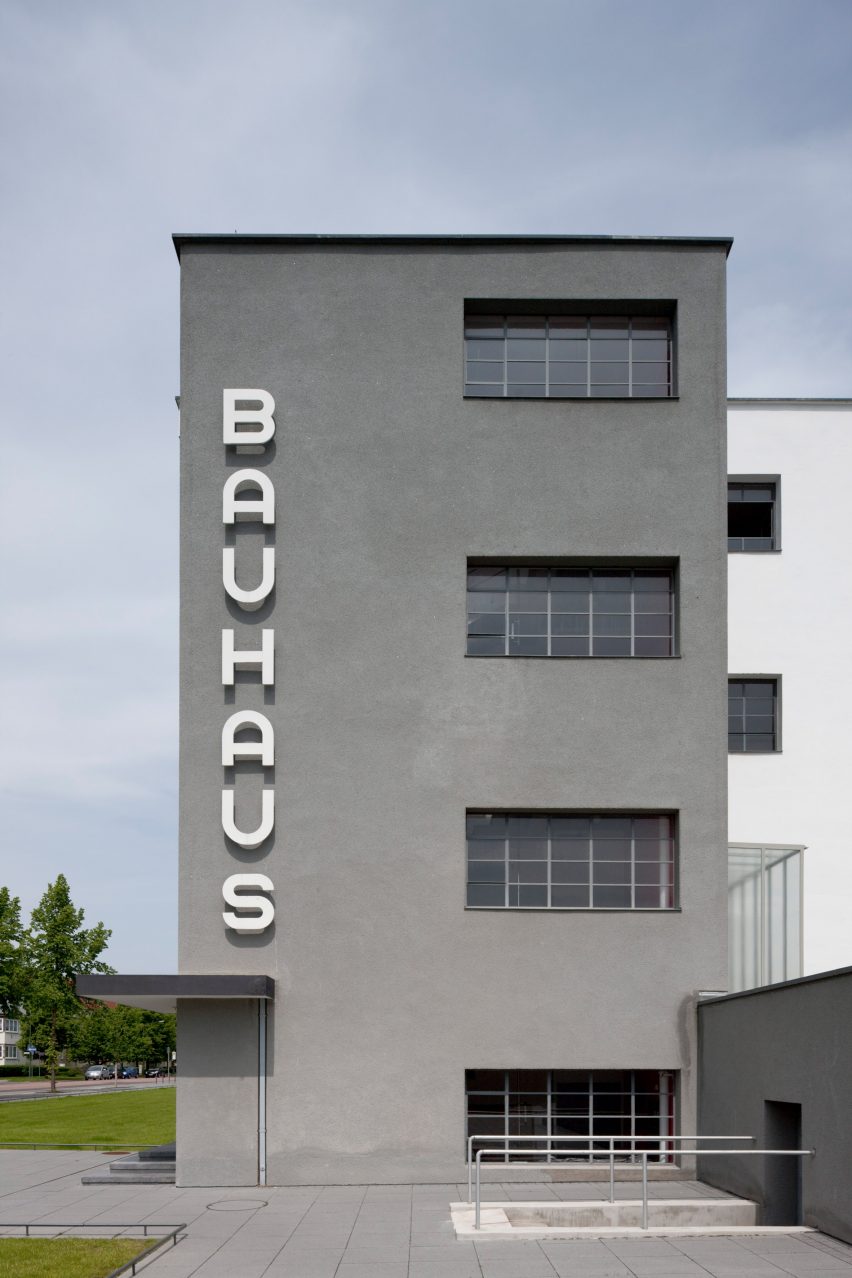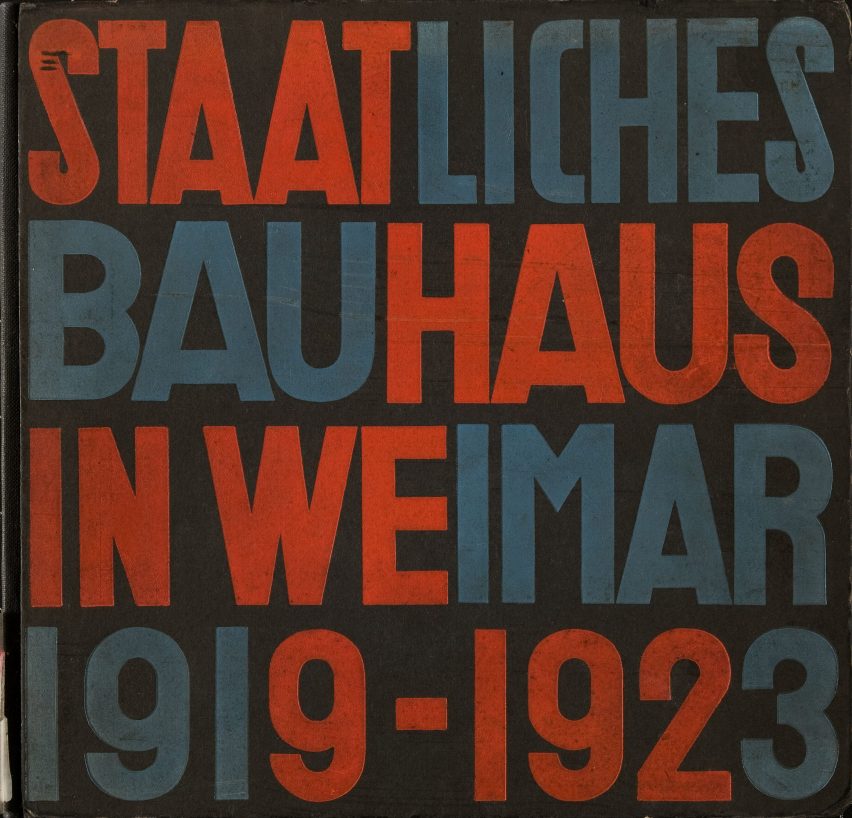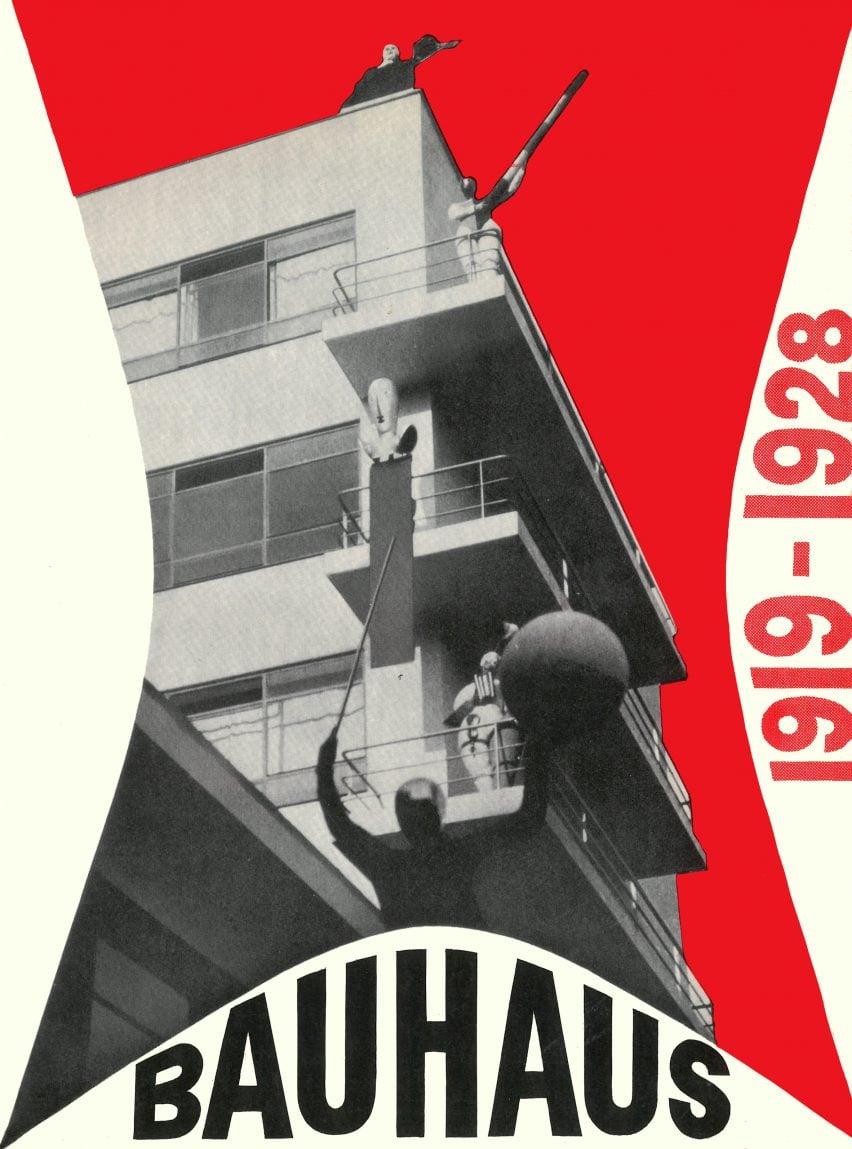
Herbert Bayer: designer of the Bauhaus' universal typography
Herbert Bayer created the Bauhaus' typographic identity. As we continue our Bauhaus 100 series celebrating the school's centenary, we explore how the Austrian designer's lettering became synonymous with the school.
True to form, perhaps the most mythic typeface to come out of the Bauhaus, Universal, was one that strove to be as idealistic as the school itself. The inclusion of an upper case was deemed unnecessary – it being, among other things, a waste of time in both the production and use of typewriters. Serifs too were abandoned in pursuit of something as crisp as architecture's International Style.
The creator of this type and many others was the prolific Herbert Bayer, not only a typographer but what MoMA has called an "artistic polymath".
Bayer was a huge proponent of the Bauhaus – drawn in by Walter Gropius' original manifesto and Wassily Kandinsky's writings – who would later go on to not only study but also teach at the school.

Born in 1900, Bayer began working for industrial-design studios specialising in architecture in 1919. He was first an apprentice in the office of Georg Schmidthammer in Linz, Austria, then after moving to Germany, for Arts and Crafts designer and architect Emanuel Josef Margold.
Margold was a member of the Darmstadt Artists' Colony, founded by Ernest Ludwig in 1899 as a means of strengthening connections between art and trade; similarities with the Bauhaus are of course clear here, particularly its earlier, more experimental craft-based works.
How much of an influence this had on a young Bayer is unclear, but it was while working for Margold that he came across Gropius' 1919 Bauhaus Manifesto and was suitably intrigued.
Bayer led Bauhaus' printing and advertising workshop
By 1921, Bayer was a student, enrolled on eccentric Swiss painter Johannes Itten's preliminary course, whose classes used techniques of concentration and breathing to aid students' creative outputs.
Only once this preliminary course was complete could Bauhaus students choose their department. Bayer joined Kandinsky's wall painting department, steeped in his theories of colour and form, for which his final piece would be a nightclub in Weimar.
With Bayer's studies completed and the Bauhaus itself moved to Dessau, Gropius – ever conscious of those whom it was good to keep around – appointed him junior master of a newly-formed printing and advertising workshop, focusing heavily on commercial design.
A large aspect of this was giving the Bauhaus a universal typographic identity. Although in 1922 Oskar Schlemmer had designed the geometric face-like Bauhaus logo, uniting the school's wide range of output needed something more.

Bayer took the task seriously – allegedly the Bauhaus' business documents were redesigned three times between 1925 and 1927, and he would also design the type used in the new Bauhaus building' signage.
Its artistic, architectural and design output aside, this was the work of creating the Bauhaus brand – a key work of Bayer's was the 1925 Catalogue of Samples, which detailed the various objects designed by the school.
His layouts and types quickly caught on – Bayer observed that a printer in Frankfurt had been asked to do half of his work "in the style of Bauhaus" as early as 1928.
Bayer not trained as a typographer
Bayer was, of course, not a trained typographer: in his own 1971 book Typography and Design and the Bauhaus, he confesses, "it was much easier to undo traditional concepts since most of us had not received traditional training as typographers and thus were not limited by received ideas".
Many exhibition posters and catalogues later, Bayer quit the Bauhaus in 1928, shortly after the departure of Gropius. Some suspect that an affair between Bayer and Ise Gropius sped up this departure, as well as leading to Bayer's wife Irene leaving him (they would divorce in 1945) and taking their daughter Julia with her.

Following stints as art director of German Vogue, and at advertising agency Dorland, Bayer established his own practice working as a painter, art director and designer. It was here that Beyer also began to work with photography, developing his striking surrealist collages.
Bayer "appalled how blind" he was over Nazism
As with many Bauhaus luminaries, Bayer's relationship with Nazism was more complicated than the history of the wider school suggests. In a period Bayer later referred to in his biography as "my advertising purgatory", his practice worked on a number of brochures and posters for the government – some, such as leaflets for the Hitler Youth, being far more questionable than others.
He would look back "appalled how blind" he had been. But at the time Bayer claimed to be apolitical, feeling he had little choice in taking the commissions. That he needed the money was certainly true.

As most of his friends and colleagues, including the Gropiuses, fled Germany, pressure mounted, but it was the inclusion of Bayer's paintings in the 1937 Nazi organised Degenerate Art exhibition that made it patently clear how unwelcome he would soon be.
Bayer fled Germany and had successful career in USA
Luckily, Bayer could afford to leave Germany when the founding director of MoMA New York, Alfred H Barr Jr, invited him to develop the 1938 exhibition Bauhaus 1919-28 – he allegedly arrived in the city with $25. This was the start of what was to be, much like it was for Gropius, a hugely successful career in the United States.
In 1942, he worked on a second MoMA exhibition, Road to Victory, and in 1946 moved to Colorado to work with industrialist Walter Paepcke promoting skiing, as well as being a design consultant at the Aspen Cultural Centre and working on several architectural projects.
Bayer's advertising work also boomed, particularly with the Container Corporation of America (also established by Paepcke). It was a hugely prolific and energetic period, that would continue until Bayer's death in 1985 as one of the last surviving Bauhaus masters. Its message never left him, as he said in 1962: "My work seen in its totality is a statement about the integration of the contemporary artist into an industrial society".

The Bauhaus is the most influential art and design school in history. To mark the centenary of the school's founding, we've created a series of articles exploring the school's key figures and projects.
See the full Bauhaus 100 series ›
Main illustration is by Vesa Sammalisto, additional illustration is by Jack Bedford.